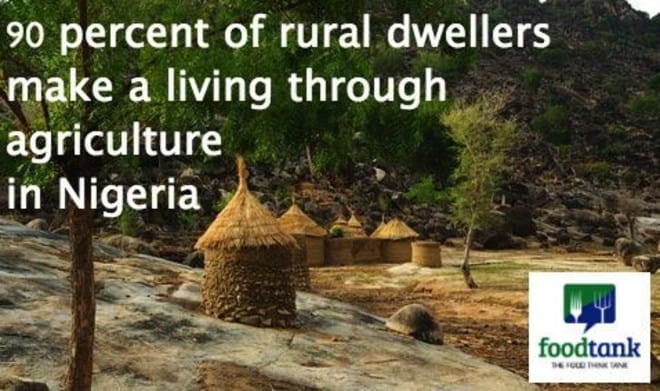In Nigeria, agriculture makes up over 40 percent of the nation’s GDP. According to the World Bank, more than 60 percent of the population makes a living through agriculture. For rural dwellers, the rate is 90 percent. But despite the country’s economic reliance on agriculture, much of the population cannot access credit and financial services. This lack of credit access, especially for rural populations, is discussed in a brief issued by the Focus on Land in Africa, entitled, Rural Land and Credit Access in Nigeria.
The report identifies two major roadblocks to credit access for rural Nigerians. The first is lack of collateral and access to formal banking systems. Only 36.6 percent of the population utilizes formal banking measures, with the remainder of the population dependent on informal methods or total exclusion from credit systems.
Exacerbating issues with credit access is the demand for collateral, of which titled land is the preferred method. Only five percent of the land in Nigeria is titled, making it an option for a very select portion of the population. The Land Use Act of 1978 helped create a complex and expensive system of land titling. For example, land held under traditional or native law are exempt from the formality of titling the land. However, if the land is transferred, the consent of a local authority is required, which can be expensive and time consuming.
Furthermore, each of the 36 states in Nigeria have their own local policies for land titling and the overall system is lagging in modernization. Land is documented through a mix of computer and manual filing adding another layer of confusion to the process. In the southern areas of the county, family and tribal lands form part of the tenure system of which women are typically excluded since they traditionally do not inherit land. Since women make up at least 50 percent of the agricultural workforce in the country, this leaves at least half of the farming population unable to secure credit from banking systems since they cannot provide the needed collateral.
The second roadblock highlighted by the report is the bank’s uncertainty over their return on investment. When banks issue loans, their primary concern is ensuring the loan will be paid back. In Nigeria, banks view agriculture as a high risk venture because of the uncertainty of crop yields. Making a profit in agriculture becomes even more uncertain when issues of poor soil quality and lack of rural infrastructure to provide access to urban markets are factored in. Small plots, which make up 90 percent of food grown in Nigeria, do not fare as well as larger plots when it comes to credit evaluations by banking systems due to their inability to produce a high volume of crops.
Adding to these issues of access, most rural farmers simply do not have the initial credit history needed to secure bank issued loans and lack a steady source of income due to the seasonal nature of agriculture. Finally, Nigerian law allows for the expropriation of land for the public good without appropriate market value compensation, making the daunting system of titling land even less attractive.
Despite these problems, reforms are in place to help strengthen the agriculture sector in Nigeria. Already, government initiatives to lower interest rates, guarantee loans, provide interest rebates and promote substitutes or a lessening of emphasis on collateral are being proposed. In 2011, an initiative, Based Risk Sharing System for Agricultural Lending (NIRSAL), was launched. This initiative provides risk sharing, insurance facility and technical assistance.
There has also been a push to improve the MicroFinance Initiative. Despite several setbacks and several documented issues including “high-interest rates, unjustifiable demand for collateral and concentration in urban areas,” the framework was revised in 2011. Attempts to reform the Land Use Act and a modernization of the titling system may lead to a streamlined system of credit for farmers who need it the most.















